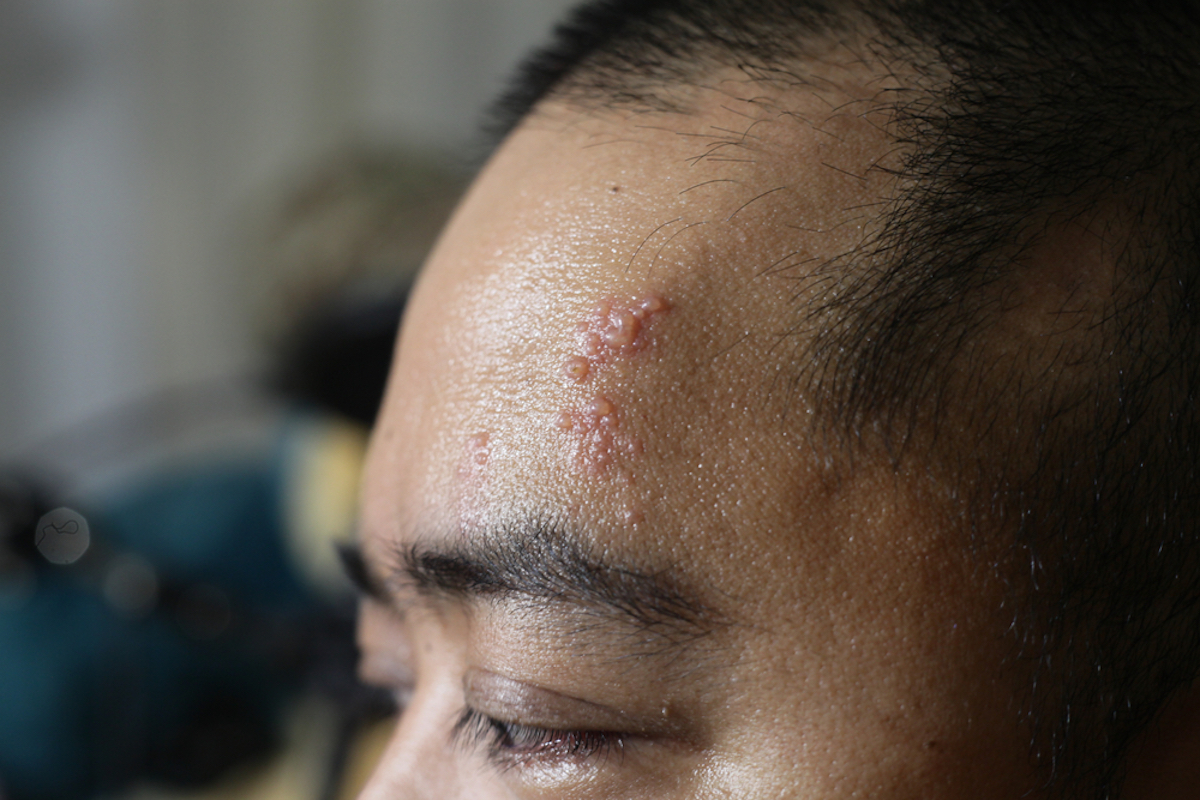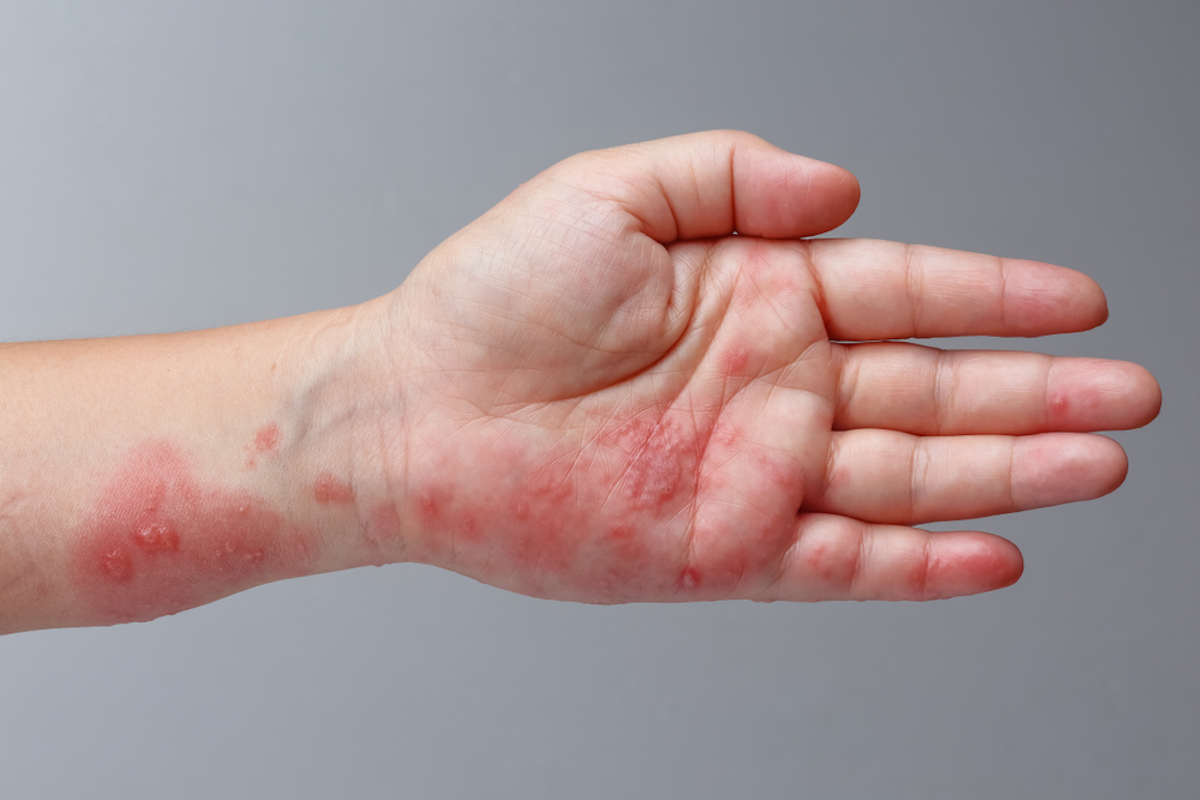Identifying a rash can be quite difficult because they usually look the same and have the same symptoms. Yet they all tend to have different causes. For example, a Scabies rash is caused by tiny mites, but the rash can also be allergic to materials or food. It could also be due to a virus. One of the rashes caused by a virus is shingles. This sounds like something that doesn’t happen often, but nothing could be further from the truth.

After all, 1 in 3 Americans will have shingles (at least) once in their lifetime. This means you have a chance of 33.33% getting this skin condition, which makes it important to know how it looks like. Why you may ask? Well, if you spot the symptoms early, you can immediately treat it, because trust me: it’s very painful and keeps you from doing many everyday things!
Causes of Shingles
As said, shingles is a viral infection caused by a virus. This virus is called varicella-zoster virus (VZV) and is the same virus that causes chickenpox. Most people get chickenpox when they are a baby or child. When you are better from chickenpox, the virus remains in an inactive state in the body and never affects you again. In 1 in 3 people, the virus reactivates, causing this as a result. Fortunately, most people experience a flare-up of this virus only once in their life – which means the virus is inactive again. Note: this isn’t always the case, some people have shingles more than once in their life.
Is it Contagious?
Shingles can be contagious for people who never had chickenpox (the varicella-zoster virus) or didn’t take the chickenpox vaccine. Don’t panic right away, the rash is only contagious via fluid-to-skin contact. This means that it’s only contagious if your shingles rash blisters leak fluid and someone who doesn’t carry the virus already comes into direct contact with the fluid – think of touching the leaking rash.
The person who gets infected will then most likely get chickenpox and thus have a chance of developing shingles later on, but again, there is a 1 in 3 chance if the virus activates. Please note: getting chickenpox as a (young) adult is painful, and you can get very sick. Chickenpox is extremely contagious, so the chances of infecting someone then are more plausible than with shingles.
Shingles is a very painful rash that can occur anywhere on the body – think of your face, scalp, buttocks, genitals, and also under your feet or between your toes. Usually, the worst symptoms are over after 7 to 10 days, but the rash does not disappear until 2 to 4 weeks. If you’re suffering from shingles, it’s important to stay away from pregnant women who never had chickenpox (or the vaccine), premature or low birth weight newborns, and people with weakened immune systems – think of leukemia or HIV patients.

Symptoms of Shingles
The big question is, how do you recognize a shingles rash? Well, fortunately, this skin disorder has some very recognizable symptoms. Most, experience a painful/itchy/tingling sensation, on the infected area, even before the rash appears. The rash is described as a single stripe around the right or left side of the body – rarely on both sides of the body. Other rash symptoms include:
- Pain, burning and/or tingling sensation
- The affected skin is oversensitive to touch
- Red rash
- Fluid-filled blisters that eventually burst open en crust over
- Itching
It’s very painful for 7 to 10 days if you suffer from shingles, fortunately, it only affects a small part of your body. In very rare cases, the rash is more widespread and looks like a chickenpox rash. In addition, most people also experience headaches, fever, chills, sensitivity to light, fatigue, and an upset stomach. People who are vaccinated against VZV have a lower risk of developing shingles. Fortunately, shingles isn’t a life-threatening problem, but they can be very painful.
You should contact your professional healthcare provider if you suspect you or a loved one is suffering from shingles. The sooner it is treated, the shorter the infection lasts. In addition, this way you reduce the chance of any complications – like postherpetic neuralgia, which is a condition that causes shingles pain even when the rash blisters are gone. In addition, make sure you cover the shingles rash when someone comes near you. Especially if you don’t know if they have already had chickenpox or have been vaccinated.

Treatment Options for Shingles
So everyone should contact their professional healthcare provider if they suspect they are suffering from shingles. You will then need to visit so that the symptoms – and possibly the rash – can be looked at. Your healthcare provider will then make a diagnosis and, if necessary, set up a treatment plan.
If it’s indeed shingles, you will need treatment right away. Don’t worry, this does not have to be done in the hospital. Treatment options are:
- Antiviral medication, like acyclovir, valacyclovir, and famciclovir
- Pain medication
- Wet compresses
- Calamine lotion
- colloidal oatmeal baths – use lukewarm water
Pain medication can be over-the-counter or prescribed medication. Antiviral medication is always prescribed by your healthcare provider and is necessary to treat shingles and shorten the length and severity of the skin disorder. In the following situations, you should see a specialist as soon as possible to avoid complications:
- The symptoms and rash appear near an eye.
- You’re 50 years or older
- You or a loved one in your family has a weakened immune system
- The rash is widespread and painful
It’s very important to listen to your healthcare provider and do exactly as instructed. Ignoring this will slow down or even reverse the process. For more information about shingles and how and where to get treatment, start your online research here:

